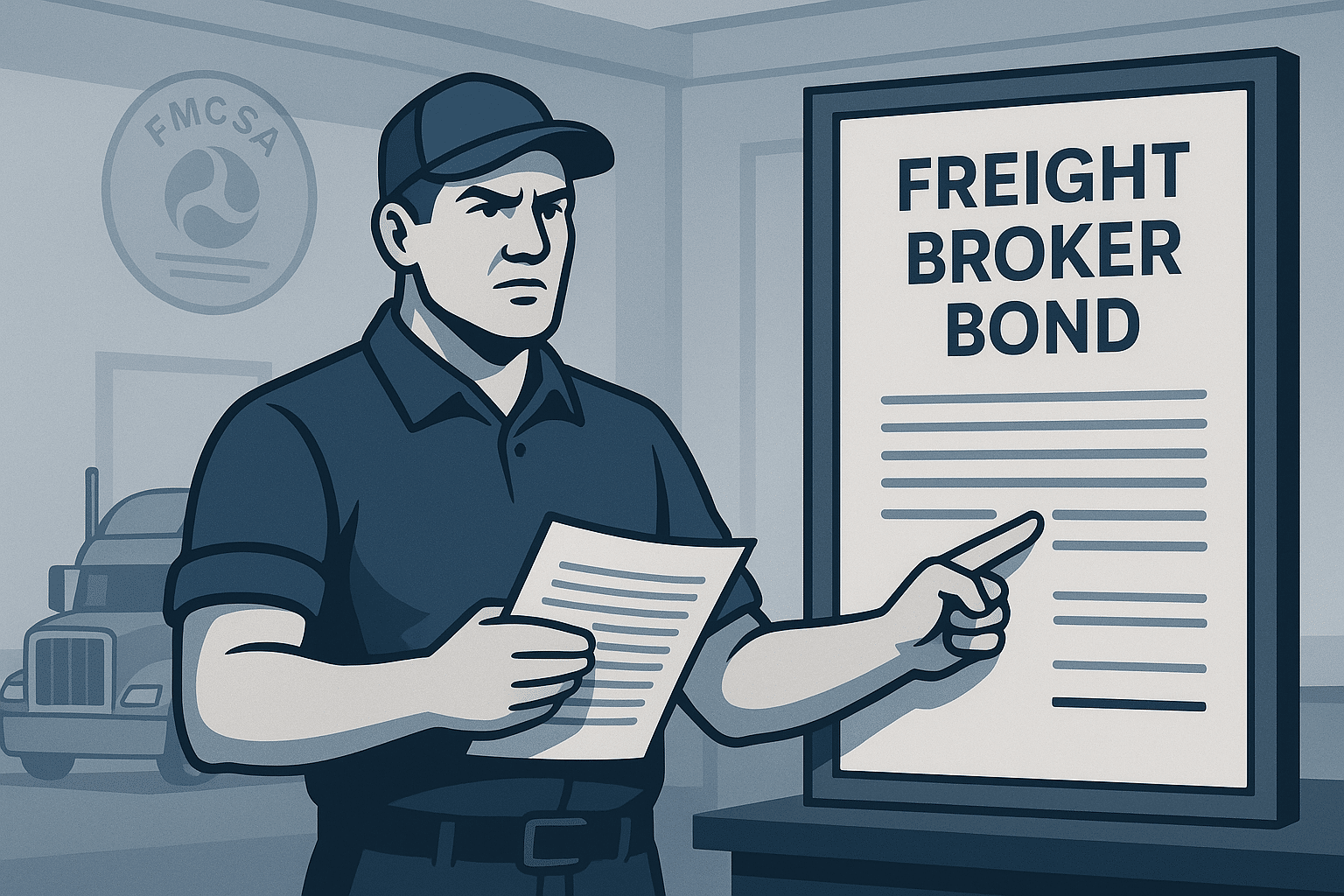How to File a Freight Broker Bond Claim — Step-by-Step Guide for Trucking Carriers
How to File a Freight Broker Bond Claim — Step-by-Step Guide for Trucking Carriers
Published: July 8, 2025 • By the Freight Girlz Team

If you’re a trucking carrier who’s been left unpaid, you may need to file a freight broker bond claim. This guide walks you through the entire process step-by-step — including when to file, what documents you’ll need, how to locate the broker’s bond, and how to get paid. Recovering unpaid freight charges doesn’t have to be overwhelming — we’ll help you protect your rights and your revenue.
🧰 Helpful Tools
🔍 Find a Broker’s Bond (FMCSA L&I)
Enter MC number or legal name. We’ll open the FMCSA Licensing & Insurance search in a new tab.
📂 Evidence Checklist
Tip: Keep scans crisp and filenames clear (e.g., “POD_2025-07-08_Load1234.pdf”).
✉️ Claim / Demand Letter Generator
Not legal advice. Have an attorney review before sending.
1. What Is a Freight Broker Bond?
A freight broker surety bond is a financial guarantee required by the Federal Motor Carrier Safety Administration (FMCSA) that protects carriers against non-payment. The FMCSA mandates that every licensed broker maintain a bond — or in some cases, a trust — in the amount of $75,000.
This bond serves as a safety net. If a broker refuses or fails to pay a carrier for a completed shipment, the carrier can file a claim against that bond to recover their money. It’s not just good business — it’s the law. Without an active bond, a broker legally cannot operate.
BMC-84 vs. BMC-85: What’s the Difference?
- BMC-84: Surety bond backed by a licensed bonding/insurance company. Valid claims are paid by the surety, which may then seek reimbursement from the broker.
- BMC-85: Trust fund agreement (broker’s own funds). No third-party surety oversight; recovery can be harder if the funds are gone.
BMC-84 is generally more favorable to carriers because a licensed surety stands behind the obligation.
↑ Back to top2. Who Can File a Freight Broker Bond Claim?
Carriers (and sometimes shippers) who suffered a non-payment loss after performing freight services under a brokered transaction may be eligible. You’ll need documentation proving the service was performed and payment is due.
↑ Back to top3. When to File — Key Deadlines
Most sureties require claims to be filed within 90 days of delivery. Always check the surety’s instructions. Late or incomplete claims are common reasons for denial.
↑ Back to top4. What You’ll Need Before Filing
Filing a claim is a legal process. Gather the following before you submit:
✅ Signed Rate Confirmation
Agreed rate, terms, accessorials, and broker MC.
✅ BOL & POD
Signed, legible, and dated.
✅ Invoice
Amount owed and terms (e.g., Net 30).
✅ Broker’s Legal Details
- Company name, MC/DOT
- Business address & contact info
- Surety company (from FMCSA L&I)
Use the FMCSA Licensing & Insurance Search Tool.
✅ Communication Records
Emails, call logs, and reminders to show good-faith collection efforts.
↑ Back to top5. How to File Your Freight Broker Bond Claim (Step-by-Step)
Step 1: Identify the Surety
Find the surety via FMCSA L&I and note the BMC-84/85 filing details.
Step 2: Contact the Surety
Request their claim form (many have downloadable PDFs).
Step 3: Submit Documentation
- Rate confirmation
- Invoice(s)
- POD
- Broker contact details
- Communication attempts
Step 4: Keep Submission Records
Save confirmations and timestamps.
Step 5: Follow Up
Check in every 7–10 business days until resolved.
↑ Back to top6. Where to Find the Broker’s Bond Information
- Open FMCSA L&I portal: Search Tool
- Search by MC# (preferred) or legal name.
- Open the “HTML” link under Insurance to see the surety, bond no., and contact.
Pro tip: Save the insurance page as PDF for your records.
↑ Back to top7. What Happens After You File?
Confirmation
You should hear back within 7–10 business days.
Investigation
The surety contacts the broker and reviews evidence.
Timeline
Typical resolution window is 30–90 days.
Approval & Payment
Checks are mailed to the address on your claim. Ensure your business name/DBA matches your bank.
↑ Back to top8. Tips to Win Your Bond Claim
- Include a signed rate confirmation.
- Submit a clean, signed POD.
- Prove you billed the broker first.
- Attach communication attempts.
- File within ~90 days of delivery.
- Be accurate and organized.
9. What If the Bond Is Maxed Out or Denied?
Broker bonds are capped at $75,000 and shared among all unpaid carriers. If you’re denied or underpaid:
- Appeal with additional evidence
- Small claims or civil action against the broker
- Use a freight collections firm
- Report behavior publicly (see our Carrier411 guide)
10. Final Thoughts — Protecting Yourself from Broker Risk
- Run real credit checks on brokers
- Avoid low-rating brokers on DAT/Truckstop/Carrier411
- Validate rates and history (e.g., Lane Logix™)
- Get rate cons in writing
- Use trusted dispatch protection (Freight Girlz)
We proactively verify brokers, track credit, and use AI to flag red flags — protecting carriers before problems start. Talk to our team.
© Freight Girlz. This article is for informational purposes and not legal advice.